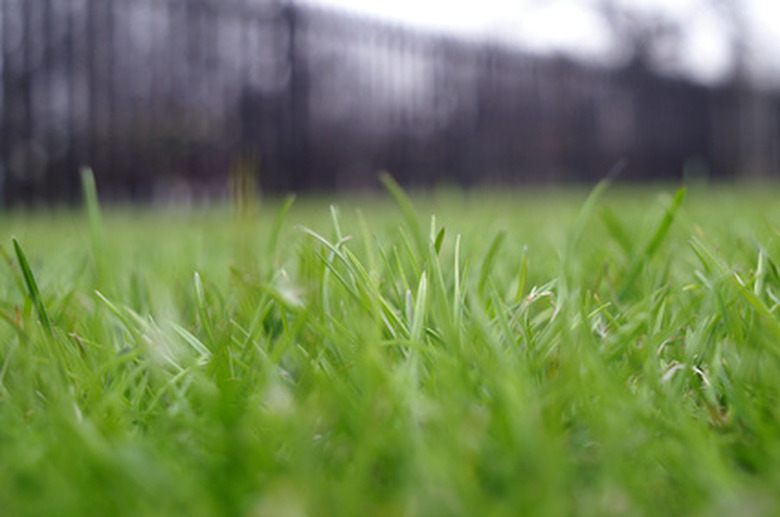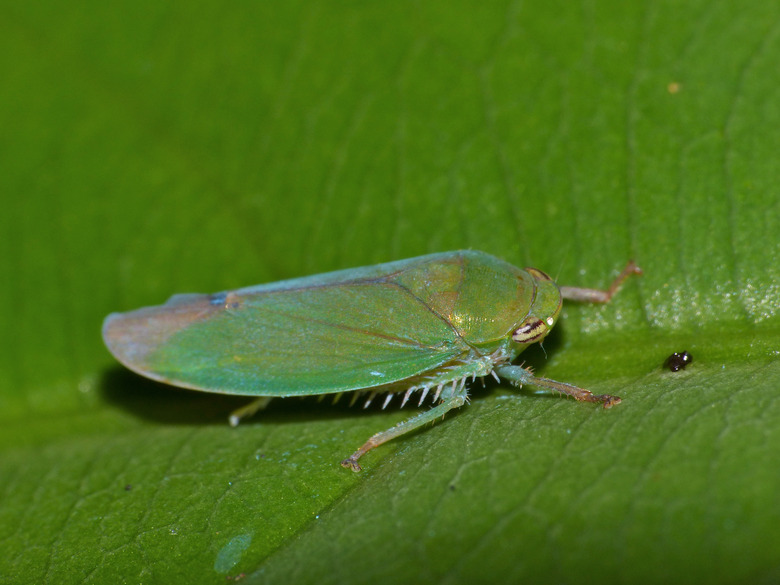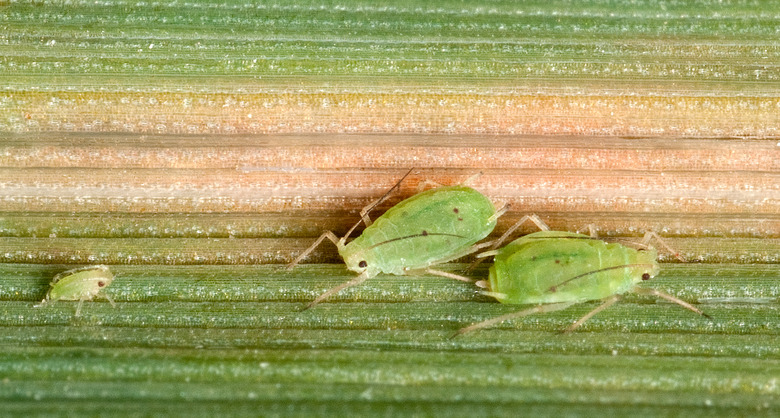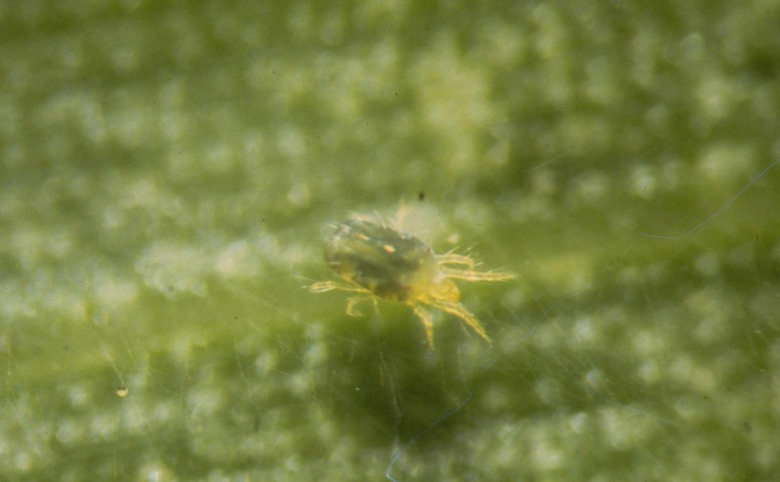How To Identify The Tiny Green Bugs In Grass
While most grass bugs that target your beautiful lawn are not green themselves, a few are. Among these are leafhoppers, greenbugs (which are a species of aphid) and grass mites.
To identify the culprits damaging your lawn, analyze the damage and—if possible—study the offenders under a magnifying glass. Then, compare what you find to expert sources that describe green insects and other pests.
Leafhoppers in Your Lawn
Leafhoppers do indeed hop, or at least they fly short distances if you disturb them. All the species within the Cicadellidae family are commonly called leafhoppers (or simply hoppers). These insects are triangular-shaped, about 1/4 to 1/2 inch long and colored pale yellow, whitish or green.
Tip
All the species in the Cicadellidae family share the common name leafhoppers. They are also casually referred to as hoppers.
Like aphids, tiny green leafhoppers suck the plant juices from the grass blades and stems. They may also invade other plants in your garden, as they feed widely throughout the landscape.
A lawn invaded by leafhoppers will eventually develop yellow spots and look whitened as if bleached. If the infestation is pervasive, the lawn will begin to droop and look wilted; finally, it dies and turns brown. Usually, the most damage occurs in full sun when the weather is hot and dry, so you might think your lawn is drought-stressed.
Greenbugs on Your Grass
Greenbugs (Schizaphis graminum), a species of aphid, usually target farm crops such as corn and grain, but they can also invade turfgrasses, including Kentucky bluegrass, annual bluegrass, various fescues and perennial ryegrass.
They are light green and tiny insects, about 1/10th of an inch long. They congregate on the upper surface of the grass blades, where they suck out the plant juices.
You can suspect these critters if you see your grass turning yellow in areas and later becoming an orangish-tan color. These damaged areas are usually somewhat round and may appear most often in partial shade along buildings or under trees.
If you think your lawn might have greenbugs, pick some of the individual green grass blades near the outside of the damaged areas. Although they are tiny, you can see greenbugs without a magnifying glass.
Banks Grass Mites and Droughts
Several grass mites can target a lawn, but the primary species that is green is the Banks grass mite (Oligonychus pratensis). Mites in the larval stage have three pairs of legs and adults have four pairs. They are very small but can be seen without a microscope in their adult stage. In very dry weather or during a food shortage, they can turn orange or red.
Look for blotched, stippled and dead areas of grass to identify a grass mite infestation. Like some other grass pests, initial damage can be confused with drought symptoms. Mite damage is, in fact, tied to drought, so you can protect your lawn by keeping it well irrigated in warm weather.
Warning
If you identify grass mites in your lawn, beware that these mites can also invade your house. Mites that enter homes can infest your family, pets and houseplants.
References
- American-Lawns.com: Insects and Your Lawn Go Hand-in-Hand
- Iowa State University: Greenbug Aphid Damage to Lawns Apparent Now
- University of Nebraska: Turfgrass Entomology (Greenbug)
- University of Georgia Extension: Mite Management in Turfgrass
- University of Nebraska: Turfgrass Entomology – Leafhoppers



